It’s not an easy task to define Professor Steve Joordens. His main occupation is to teach the class of Introduction to Psychology at the University of Toronto Scarborough, to a huge crowd of over 1900 freshmen of the Psychology programs. But he still finds time to run the Advanced Learning Technologies Lab at UofT, be a very active researcher in the fields of Cognitive Psychology and Educational Psychology and, more recently, offer a highly praised MOOC to more than 80 thousand students from around the world.
For Rescola, he talked about this experience, the educational technologies he is developing and his expectations for the future of education.
Oh, Steve also rocks on lead vocals and guitar in The Freakin Lolas band. Therefore, this interview deserves a proper soundtrack. Pump up the volume, press play and enjoy your reading!
Rescola: Your first Mooc, Introduction to Psychology, offered by the University of Toronto through Coursera, was a big hit among the students. There is a huge amount of praise and thanks in forums and on Facebook. Do you already have the final numbers? How many students were enrolled? How many completed the course? How many passed?
Prof. Steve Joordens: Roughly speaking, between 60,000 and 70,000 students “enrolled” in the course at the time it was formally offered, but as of today over 82,000 have enrolled. Students continue to watch the lectures and enjoy the course even though the formal aspect of it is complete. Of that 82,000, over 59,000 were considered “active” in the course, which means they did more than just hit the register button. Over 2000 students were active last week [1]! The course continues in my absence.
In the formal offering of the course about 45,000 were “active” at some point, about 15,000 watched every video, and almost 6000 earned a certificate of completion which means they performed all assessments and obtained a passing grade.
[1] Prof. Joordens refers to the first week of September 2013, two months after the official closing date of the course.
Rescola: What was the experience of teaching in this format like? How does it differ from teaching in the classroom?
Prof. Steve Joordens: It differed in a number of ways. For one thing the lectures themselves were all shorter than my traditional lectures, and I tried hard to have each lecture focus on a specific self-contained story that was of course related to the larger overall story of Psychology. But perhaps most striking was the difference in the students. Sometimes university students end up in university because they don’t know what else to do, and they end up in my class because it is required or it seemed like a good idea. MOOC students specifically chose to take classes they are interested in, and only stay in the class if it keeps their interest, and they freely devote significant amounts of time from their busy lives. So they are interested and they are invested, and they are a real joy to interact with. Of course I also love interacting with my university students, but the MOOC students had a different vibe. They are more mature, and their motivations are more internally driven, and many of them have established lives and careers. So it feels a little more like a group of intelligent interested humans interacting, with me guiding those interactions and participating in them, but not directing them to the same extent.
Rescola: Do you intend to offer other Moocs? What would you do in a different way the next time?
Prof. Steve Joordens: Well, the one thing we all hear about MOOCs is that they take A LOT of time to do right. I invested many late nights for months before the MOOC even began, then many more staying “plugged in” during the formal offering itself. I loved it, but of course I also have all the commitments of my normal full time job, and there is no doubt that offering the MOOC really took a lot out of me. Offering the current MOOC again would not be as much work, but it would still be a lot. Doing a completely new one would be repeating the entire workload. All this to say that I would love to do more MOOCs, but I need to find a way to do it and remain sane and married and, at this point, I haven’t found a way to do that.
With respect to what I would do differently, other than some tweaking of little things, I’m not sure I would do a lot differently. We used a lot of our educational technology tools because I am a big fan of active learning and wanting to bring more of it into the MOOC world. The one real hitch we had was getting the grades from our system back into Coursera, and we learned some things the hard way while doing that. But I think we have that straightened out now so other than potentially adding some even newer technologies (i.e., I can never seem to leave well enough alone) I think I would largely do things as I did.
Rescola: In your course, the assessments were made using online educational platforms that you developed at the University of Toronto. The quizzes, for example, were applied via mTuner. Could you talk a little about it?
Prof. Steve Joordens: Sure, within our Advanced Learning Technologies lab we create and assess educational technologies. All of our technologies are based on existing research, and we then hone their efficacy with further specific research on the technology itself. mTuner specifically is a supercharged multiple-choice type tool that incorporates everything we know about “assessment FOR learning” to both assess and deepen learning.
The idea is this. Students are never more engaged than when their knowledge is being assessed. It follows then that assessments provide a great context for learning, and for correcting misconceptions. In fact a great deal of research has shown that students form connections between the questions they see and the answers they chose, even when they chose wrong! So the primary purpose of mTuner is not allow this to happen; to reinforce correct responses while correcting incorrect ones before they are learned.
The analogy is tuning a stringed instrument like a guitar. When one tunes a guitar they move from string to string. If a string is in tune, cool, they move on. If a string is out of tune, they first tune it before moving on. By the end of the process all strings are in tune and the instrument sounds beautiful.
Within mTuner students are first asked to retrieve answers to questions before seeing the alternatives. This primes their mind for learning by putting them in a thinking and retrieving mindset. They are then shown the alternatives and asked to choose the right answer. If they are incorrect, they are then shown a short snippet of the lecture relevant to the question, and then given a second chance for half marks. Before moving on they are then clearly shown the right answer, and given another short explanation of why it is correct. So when students choose right they know they were right and why they were right. If they choose wrong they are corrected before they can start believing their wrong answer was right.
The result is both a mark reflecting what students know, and a learning experience that reinforces accurate learning while reducing misconceptions… assessment FOR learning.
- 1. O aluno lê a pergunta escreve a resposta sem ver as alternativas.
- 2. O aluno vê as alternativas e escolhe uma delas.
- 3. Se o aluno escolher uma alternativa errada, é informado imediatamente e recebe uma dica.
- 4. O aluno ainda pode assistir um trecho da aula em que a questão foi discutida.
- 5. O aluno pode tentar uma nova resposta e receber metade dos pontos da questão se acertar.
- 6. A alternativa correta é informada ao aluno com uma explicação de porque ela é a certa.
Rescola: And what about peerScholar, that was used for students to evaluate each other? What are its key benefits?
Prof. Steve Joordens: peerScholar was originally created to harness the power of peer and self- assessment as a way of teaching students how to think critically and to communicate their ideas efficiently and effectively. Students submit an argument piece – which already exercises critical thought and communication skills – and then they assess the work of a subset of their peers, and they also assess their own work. This requires them to analyze, evaluate, compare and categorize, all skills related to critical thought. Then they are expected to help each peer by telling them the one thing they could change that would most improve their work, requiring creative thoughts and clear communication.
In the MOOC course the process ended their, but peerScholar can also be used formatively. That is, students can be asked to perform another step that involves them reading and rating the comments that peers gave to their work, and then revising the work in light of those comments to make it better. When used this way students are strongly pushed to self-reflect and to engage their meta-cognitive skills.
Given all of the above, the idea behind peerScholar is that a good educational experience is more than just learning about some new content area. A good educational experience also includes practice with the sorts of cognitive skills that we all use every day to impress others, to express our perspectives, and to win arguments. These are the skills that are associated with success and leadership, and I feel it’s important to include practice with these skills in every course I teach.
- 1. O aluno submete seu trabalho.
- 2. O aluno se auto-avalia. A auto-avaliação não influencia na nota, mas inicia o processo de reflexão do aluno sobre seu trabalho.
- 3. Após a data limite para entrega dos trabalhos, o aluno retorna para avaliar o trabalho de colegas não identificados. Ao mesmo tempo, outros colegas estarão avaliando o trabalho dele.
- 4. O aluno dá notas de acordo com instruções fornecidas pelo professor e deixa comentários que ajudem a melhorar o trabalho dos colegas.
- 5. O aluno volta a se auto-avaliar, agora tendo outros trabalhos como referência.
- 6. Após o prazo limite para as avaliações, o aluno retorna para ver a avaliação dos colegas sobre seu trabalho.
- 7. O aluno avalia o quanto foram úteis os comentários dos colegas.
- 8. O aluno tem a possibilidade de alterar seu trabalho, incorporando os comentários dos colegas.
- 9. O aluno se auto-avalia novamente, agora comparando o resultado final com o inicial.
Rescola: You are a young grandfather of a beautiful little girl of just over one year old, right? What do you think school will be like for her in 10 years? And her College or University in 20? To what extent will she use things like peerScholar, or MOOCs?
Prof. Steve Joordens: Young eh? Thanks for that! Actually, I now have two beautiful granddaughters, Ashleigh and Eliana, with a third, Jesslynn, due to arrive in November. The all-girl band I will manage in my retirement is almost complete! Ha!
Some of the technologies we have created, including peerScholar, are now being used across Canada and are beginning to spread worldwide. We have known the benefits of active learning for a long time, but I think we are just now beginning to purpose-build, and appropriately test, technologies that can allow teachers to include active learning components without them needing to spend even more of their time than they already do, and without them needing to become technology experts themselves. These tools have to be both powerful and easy to use, and their effectiveness needs to be documented.
So yes, I do hope that my grandchildren will learn actively and I think tool like peerScholar, mTuner and Digital Labcoat [2] will give them richer learning experiences than we had as kids, and I hope that will make them natural critical thinkers and communicators. In addition I do expect that the pathways of learning will continue to grow and diversify. MOOCs empower students to choose their own learning pathway. My hope is that this kind of student-directed learning, a notion championed long ago by Isaac Asimov, will become one that is formally recognized. That is, I see students having a choice. Those who appreciate and benefit from the sort of structure that a university provides will have the option of learning that way, while those who prefer to direct themselves down a learning path will be able to do so in a way that sees their accomplishments valued and certified. There are many challenges to overcome to allow this to happen, challenges associated with academic integrity and the like. But that is my hope for them… that, and I hope they learn to play a mean “Rockin in the Free World!”
[2] Digital Labcoat was another tool developed by Prof. Steve Joordens used in the MOOC Introduction to Psychology. It simulates the scientific research process, allowing students to understand how it is done in a real lab.




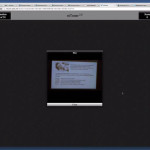

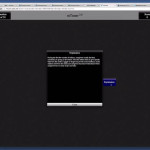
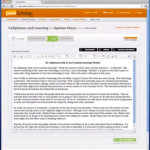
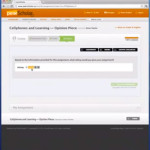
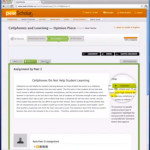
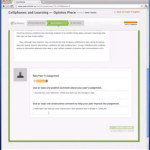

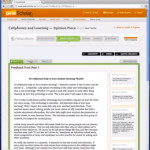
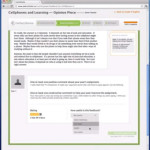




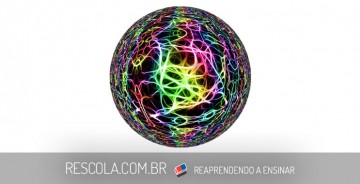
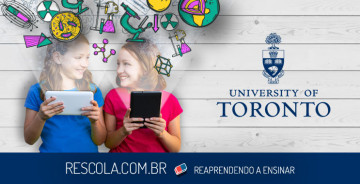


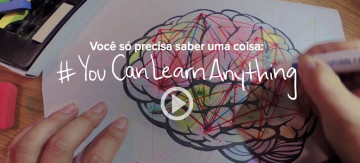
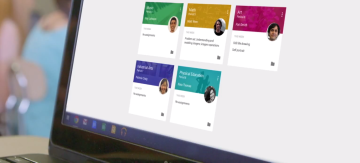
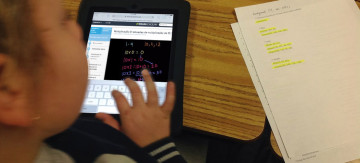
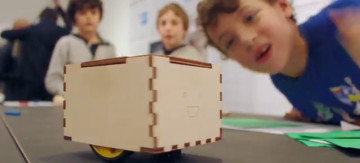


Excelente! Bela iniciativa.